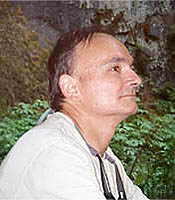Scott Bridgham

- Email: bridgham@uoregon.edu
-
Professor
- Office: 362 Onyx Bridge
- Phone: 541-346-1466
- Lab: 364, 367 Onyx Bridge
- Lab phone: 541-346-1549
- Lab Website
Research Interests
- What are the underlying controls over rates of carbon and nutrient cycling, and how do anthropogenic perturbations interact with these underlying controls? I am particularly interested in rates under anaerobic conditions and factors that control the emission of methane, a potent greenhouse gas, in wetlands.
- How do plant and microbial community structure relate to rates of carbon and nutrient cycling? My recent research has particularly focused on (i) plant nutrient use efficiency, (ii) the role of invasive, exotic plants on ecosystem function, and (iii) the role of microbial community structure in soil carbon cycling.
- Can ecosystems be restored to provide similar functions as natural ecosystems, and what is the role of plant community structure and succession in achieving successful restorations?
- Climate change is a pervasive, on-going anthropogenic perturbation of natural ecosystems. How will it impact carbon and nutrient cycling, fire, and plant community structure in ecosystems as diverse as northern peatlands and prairies and oak savanna?
Before coming to UO, my research was mostly in wetlands, and particularly in peatlands. While I continue to work in wetlands, my research in recent years has been extended to lakes, streams and rivers, whole-watersheds, upland prairies, savannas, and forests.
Selected Publications
Updegraff, K., S. D. Bridgham, J. Pastor, P. Weishampel, and C. Harth. 2001. Response of CO2 and CH4 emissions in peatlands to warming and water-table manipulation. Ecological Applications11: 311-326.
Frost, P. C., J. H. Larson, L. E. Kinsman, G. A. Lamberti, and S. D. Bridgham. 2005. Attenuation of ultraviolet radiation in streams of northern Michigan. Journal of the North American Benthological Society 24:246-255.
Bridgham, S. D., J. P. Megonigal, J. K. Keller, N. B. Bliss, and C. Trettin. 2006. The carbon balance of North American wetlands. Wetlands 26:889-916.
Keller, J. K. and S. D. Bridgham. 2007. Pathways of anaerobic carbon cycling across an ombrotrophic-minerotrophic peatland gradient. Limnology and Oceanography 52:96-107
Pfeifer-Meister, L. and S. D. Bridgham. 2007. Seasonal and spatial controls over nutrient cycling in a Pacific Northwest prairie. Ecosystems 10:1250-1260.
Pfeifer-Meister, L., E. Cole, B. A. Roy, and S. D. Bridgham. 2008. Abiotic constraints on the competitive ability of exotic and native grasses in a Pacific Northwest prairie. Oecologia 155:357-366.
Teaching
Wetland Ecology & Management Bi 465/565
Introduction to Environmental Science ENVS 202
Terrestrial Ecosystem Ecology BI 476/576
Graduate Orientation Seminar for New Environmental Studies students, ENVS 607